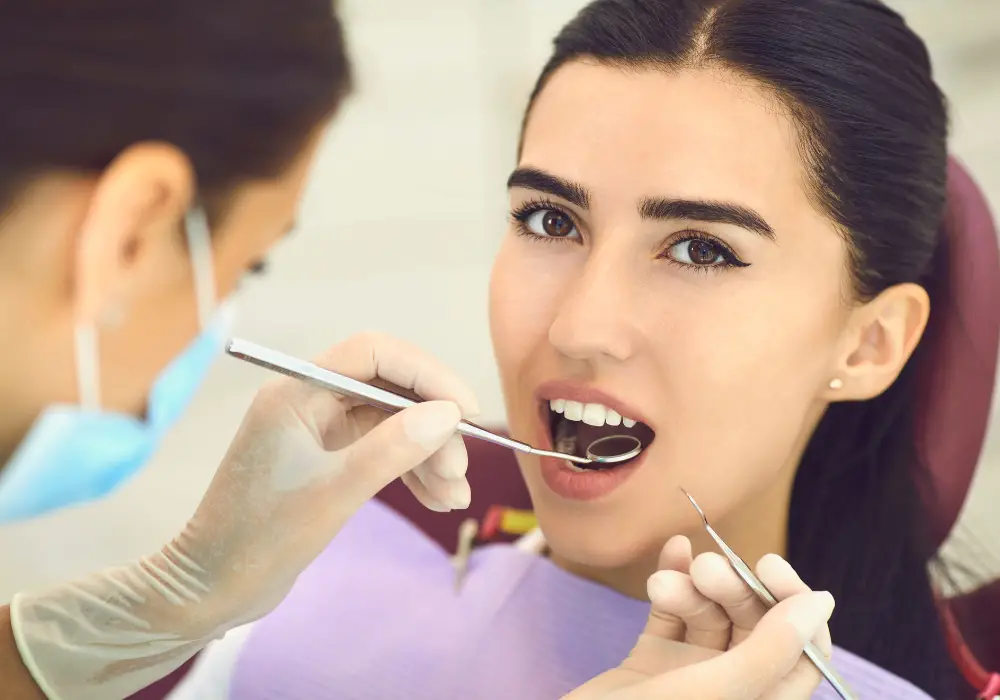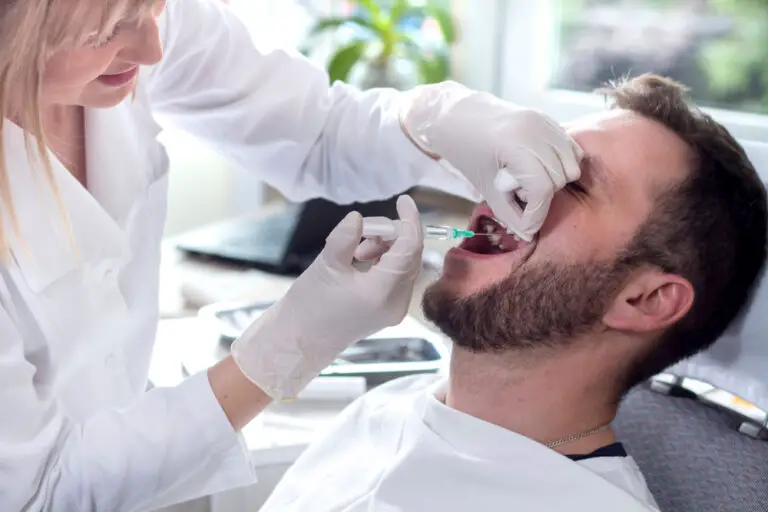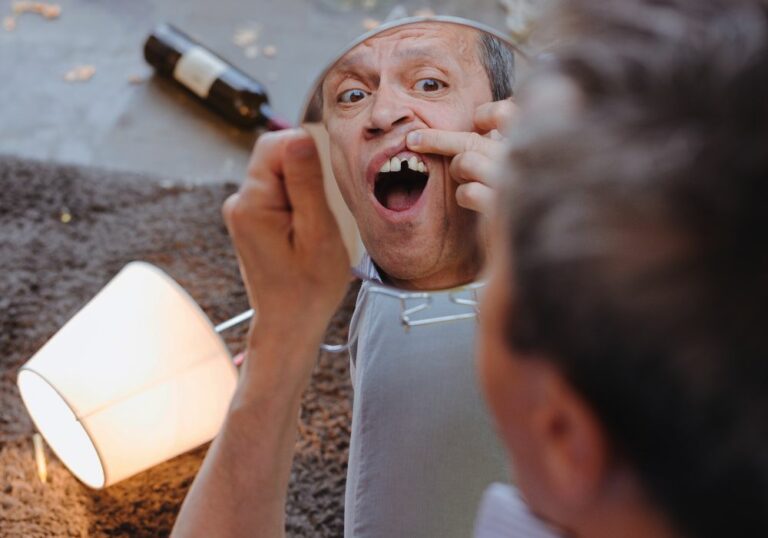The causes and types of tooth damage
Our teeth face constant threats from damage on a daily basis. The hard, calcified structure of teeth makes them susceptible to various forms of injury that can compromise both their appearance and function. Understanding the common causes and types of tooth damage is the first step toward protecting dental health.
Cavities
Cavities represent the most prevalent source of tooth decay. They occur as acidic byproducts from oral bacteria gradually dissolve through the enamel and underlying dentin layers of teeth. This erosion causes holes or lesions that can lead to infection of the soft pulp tissue if not treated.
Cavities tend to form more readily along the chewing surfaces between teeth, where food particles and plaque are easily trapped. The crevices and grooves that give molars their shape also provide convenient nesting spots for cavity-causing bacteria. Other high-risk areas include contact points between adjacent teeth and exposed root surfaces.
While cavities can develop at any age, children and teens are especially prone due to their developing tooth enamel. Frequent snacking on sugary or starchy foods feeds acid-generating bacteria. Adults also face higher cavity risks if they consume acidic foods and beverages or have medical conditions causing dry mouth. Prompt cavity treatment is vital to prevent extensive decay across tooth surfaces.
Cracks and chips
Cracks and chips represent acute dental trauma, arising from single events like sports injuries, falls, or accidents. The brittle nature of enamel makes teeth prone to cracks from forceful blows. Small pieces can chip off, while deeper cracks may extend into the inner dentin layer.
Cracks and chips often result from chewing hard foods or objects. Temporomandibular joint disorder can also cause teeth grinding and excessive biting force. These habits place enormous pressure on teeth. Over time, the repeated stress causes vulnerable zones in enamel to fracture and break off.
Besides pain sensitivity, cracks and chips lead to aesthetic concerns. Gaps and roughness look unsightly and make teeth more plaque and decay-prone. Further chewing can worsen fractures. Deep cracks may eventually require extraction if they extend under the gumline into the root. Thus, repairing cracks and chips helps strengthen teeth against further damage.
Wear
While enamel is the hardest substance in the body, it still undergoes slow wear during everyday use. The upper and lower teeth make contact during swallowing and other motions around 2,000 times per day. This almost imperceptible friction gradually erodes enamel over decades. Acidic foods and abrasive brushing habits also accelerate enamel loss.
Areas at highest risk for wear include the biting edges and surfaces that rub against adjacent teeth. As enamel thins, teeth become more transparent and may darken from underlying dentin showing through. Increased sensitivity to hot and cold foods is another sign of progressive wear.
Severe enamel erosion exposes the much softer dentin layer to food debris and bacteria. This leaves teeth more prone to decay and infection of the inner pulp. Timely treatment is essential to restore enamel thickness and minimize wear-related damage.
Periodontal disease
Inflammation and infection of the gums and supporting structures of teeth lead to periodontal disease. Also called gum disease, periodontal disease arises when plaque bacteria colonize along and under the gumline. Toxins from this plaque irritate the gums and prompt an immune response.
As the disease advances, deepening pockets form between gums and teeth. Bacteria populate these pockets and spread infection through tissues and bone. The loss of ligaments and supportive bone around teeth leads to loosening or even tooth loss in advanced cases.
Besides plaque buildup, risk factors for periodontal disease include genetic susceptibility, smoking, diabetes, hormonal changes, clenching or grinding teeth, and certain medications. Good oral hygiene and professional cleanings can treat mild cases and reverse some damage. However, bone loss from severe periodontal disease is often permanent.
Evaluating the potential for tooth recovery
The mouth’s ability to bounce back after dental disasters depends greatly on the type and extent of damage. Evaluating key factors helps determine prognosis and appropriate treatments for recovery.
- Age – Younger patients have greater natural regenerative capabilities and density of supportive gum and bone tissues. Older individuals often experience slower healing.
- Overall health – Systemic conditions like diabetes or autoimmune disorders can impair healing. Good nutrition supports recovery.
- Oral hygiene habits – Poor habits increase likelihood of further damage. Meticulous home care promotes optimal repair.
- Nature and severity of damage – Slight wear may require minimal intervention while advanced decay necessitates major restoration.
- Timeliness of treatment – Early intervention prevents additional tissue and tooth loss. Delayed action reduces options.
- Compliance with care instructions – Following all prescribed at-home and professional care is critical for recovery success.
Additionally, the specific tooth involved influences prognosis. Front incisors typically receive less force and last longer. Back molars that bear crushing forces during chewing require complex repairs. With careful assessment and the right treatment approach, even severely damaged teeth stand a good chance of gaining renewed function and longevity.
Restorative treatments to repair tooth defects

Modern dentistry offers a wide array of tactics to rebuild and rehabilitate damaged teeth. Treatments range from minimally invasive to full reconstruction based on the type and extent of injury. Many provide not just recovery but enhanced strength against future damage.
1. Fillings
Fillings aim to remove tooth decay and replace lost structure. After numbing the area, the dentist uses a drill to access and clear out a cavity of all infected material. The cleaned cavity is then filled with a specialized dental compound like metal amalgam, composite resin, porcelain, or glass cement.
Fillings rebuild teeth after modest decay. They prevent further bacterial invasion toward the pulp by sealing cracks and holes. Regular dental visits allow early detection and small fillings to prevent the need for major repair down the line.
2. Inlays and onlays
Sometimes cavities or cracked areas are too large for basic fillings. In these cases, a solid custom-made restoration called an inlay or onlay is designed to precisely fit over the affected region. Inlays fill cavities within the biting surface while onlays also cover one or more side areas.
These restorations are created from durable porcelain, composite, or gold materials. They provide full coverage reinforcement against fractures in weak areas. Though more involved than simple fillings, inlays and onlays conserve healthy tooth structure compared to crowns.
3. Dental bonding
For small chips, cracks, and discolorations, dental bonding applies a putty-like resin material to fill flaws. The dentist selects a composite shade matching the tooth color, shapes the resin to fill in defects, and then uses a curing light to harden the material.
Bonding camouflages cracks and gaps for an improved aesthetic appearance. It forms a tight seal to prevent sensitivity and food trapping. As a conservative approach, bonding preserves maximal natural tooth structure. However, bonding is not as durable for large repairs as crowns.
4. Dental crowns
When teeth require major reconstruction after extensive decay or fracture, crowns offer full coverage. The dentist first files down the damaged tooth to remove defects and create a pillar on which to place the crown. An impression is made to model the dimensions for a customized crown.
The fitted crown acts like a cap to restore form and function. Crowns protect vulnerable teeth from future damage during chewing. They are made from sturdy materials like porcelain fused to gold or zirconia ceramic. With proper care, crowns can last 10-15 years or longer before replacement is needed.
5. Bridges
If a tooth is fully lost, surrounding teeth can be fitted with a fixed dental bridge. A bridge features one or more artificial teeth fused between two adjoining natural teeth or implants. The attached crowns anchor the replacement tooth in position for a seamless appearance and ability to chew normally.
Bridges restore structure after tooth loss to prevent shifts in position. They allow evenly distributed biting forces. Care is still required to clean bridge units and avoid decay in supporting abutments. Implant-supported bridges offer an even more stable long-term tooth replacement option.
6. Gum recession treatment
Early periodontal disease responds well to plaque removal through professional cleaning and antibacterial rinses. Advanced bone loss requires surgical intervention. Soft tissue grafting can help regrow enough gum tissue to cover exposed roots and support healing.
In some cases, destroyed bone must also be rebuilt around teeth. Bone grafting utilizes fragments from human, animal, or artificial sources to stimulate bone regeneration where periodontal disease destroyed foundations. With regeneration of both soft tissue and bone, gum recession damage can be reversed.
7. Tooth extractions and implants
Hopelessly damaged or decayed teeth despite restorative efforts may need extraction. Dental implants offer an ideal solution for replacing single missing teeth. The surgically implanted post fuses with the jawbone to serve as an artificial root. A custom crown is then affixed to this root to replicate the natural tooth.
Implants help prevent bone loss after extractions. They restore full function for chewing and speaking. Because the jaw integrates implants so securely, they match or exceed the longevity and stability of natural teeth. With innovations like mini-implants, replacements for missing teeth are now accessible, realistic options.
At-home habits for protecting repairs

While modern dentistry can remedy most tooth damage, maintaining oral health through smart daily habits remains imperative. Proper technique and vigilance help preserve restorations and natural teeth. Consider the following ways to support recovery:
- Regular brushing and flossing – Meticulous plaque removal protects against recurrent decay and gum disease. Use soft brush, proper pressure, and fluoride toothpaste.
- Diet – Limit sugary and acidic foods that erode enamel or plaque. Stay hydrated and chew sugar-free gum to produce protective saliva.
- Wear mouthguard if grinding – Clenching and grinding places enormous force on teeth. A guard buffers this overnight pressure.
- See dentist regularly – Professionals detect issues early before they require major repair. Cleanings remove harmful plaque buildup.
- Stop smoking – Smoking raises infection risks and is the top preventable cause of periodontal disease.
- Get defective restorations fixed promptly – Small cracks in fillings or crowns should be addressed quickly before bigger failures occur.
- Avoid chewing ice or hard items – This prevents chips and cracks that necessitate additional restorative work.
With the appropriate remedial treatment plus daily preventive care, the mouth can rebound well from damage. Awareness of risks, early intervention, and diligent hygiene will help your smile withstand years of use.
Frequently asked questions about recovering dental damage
Here are some common questions and answers about the prospects for damaged teeth to heal and regain function:
Can cavities heal without fillings?
Unfortunately, cavities do not heal on their own because the enamel structure of teeth cannot regenerate. Cavities will continue to grow without intervention. The decayed area must be treated by a dentist who will clean out bacteria and fill the hole to restore a sealed barrier.
Should small cracks in teeth be repaired right away?
Minor cracks may not require immediate repair if they are not causing pain or biting problems. However, it is smart to have even hairline cracks evaluated, since bacteria and fluids can seep in and worsen the fracture. Resin fillings help stabilize small cracks before they progress.
Can receding gums grow back completely?
If diagnosed early, mild gum recession can be reversed through dedicated oral hygiene and certain regenerative procedures. Advanced recession with significant loss of ligaments and bone is harder to correct fully. Grafting provides partial improvement but typically cannot restore gums to original positions.
How long do dental implants last?
With proper placement and care, dental implants are designed to last a lifetime, generally 30 years or more. Their durability matches natural teeth, especially since they do not decay like biological tooth structure. Avoiding excessive biting forces helps maintain the stability of implants.
Do dental injuries always require treatment?
Not necessarily. Superficial chips or hairline cracks may just require smoothing by the dentist to prevent further damage. But bites, blows, or falls that loosen teeth or cause significant cracks demand immediate treatment. Knocked out permanent teeth need quick replanting if possible. See a dentist promptly after any dental injury.
Conclusion
From small cavities to entire tooth loss, many forms of damage plague natural teeth. Yet improvements in restorative care mean that most damaged teeth can successfully recover both aesthetics and function. Early detection and treatment coupled with vigilant daily dental hygiene offer the best formula for reversing damage. With close cooperation between patients and dentists, even extensive destruction need not be permanent. A strategic treatment plan and commitment to prevention provides the path to renewed dental wellness.






